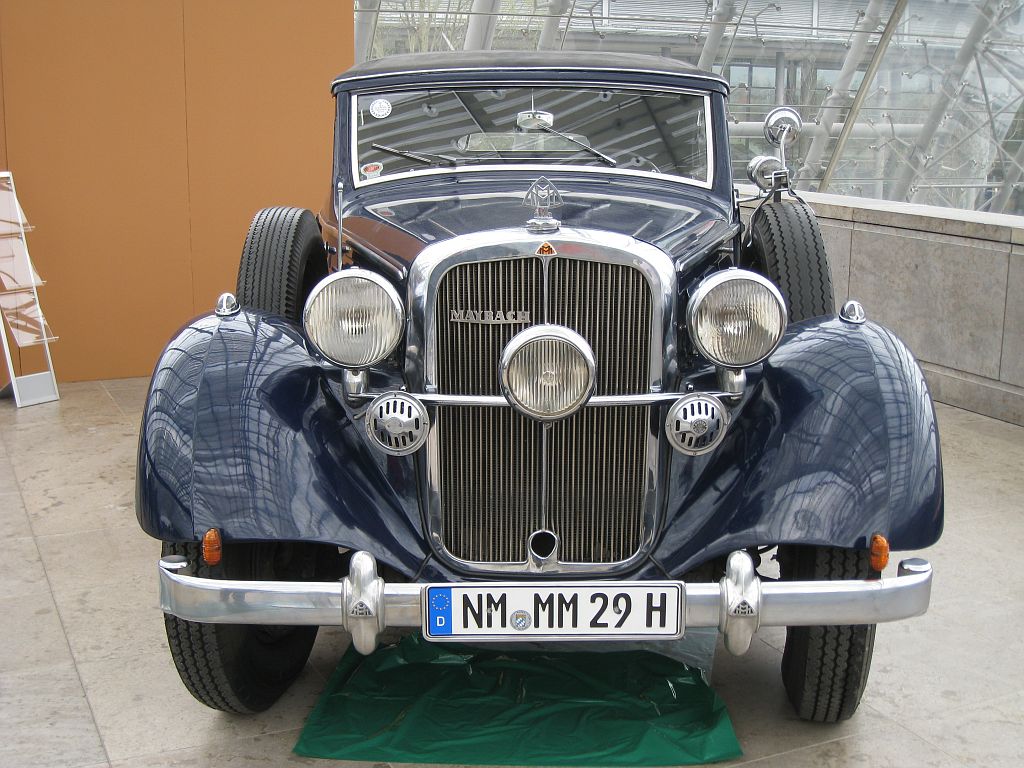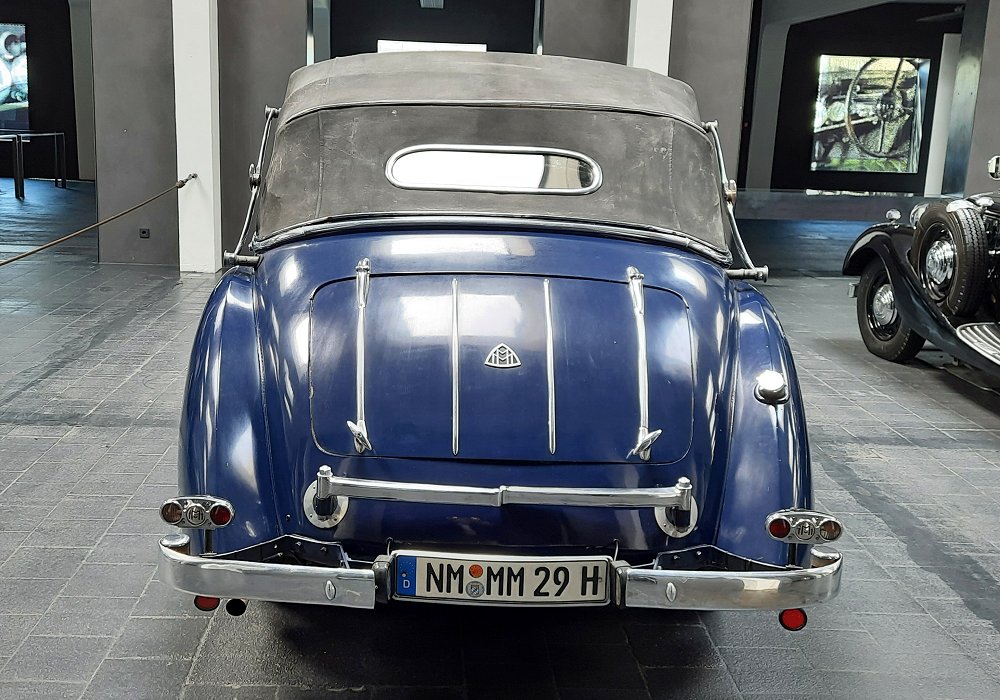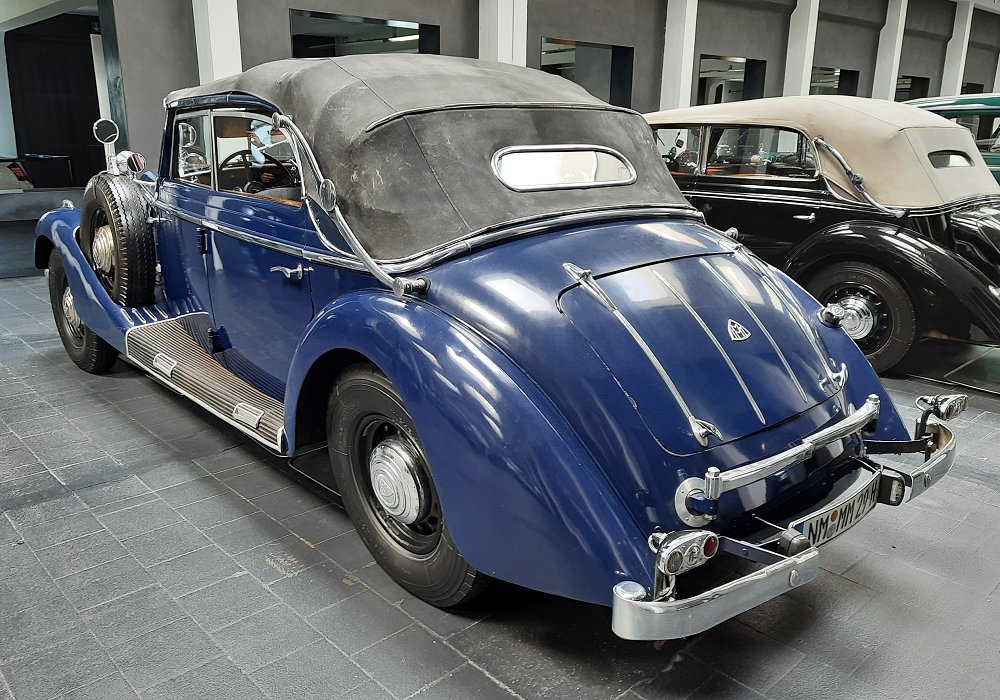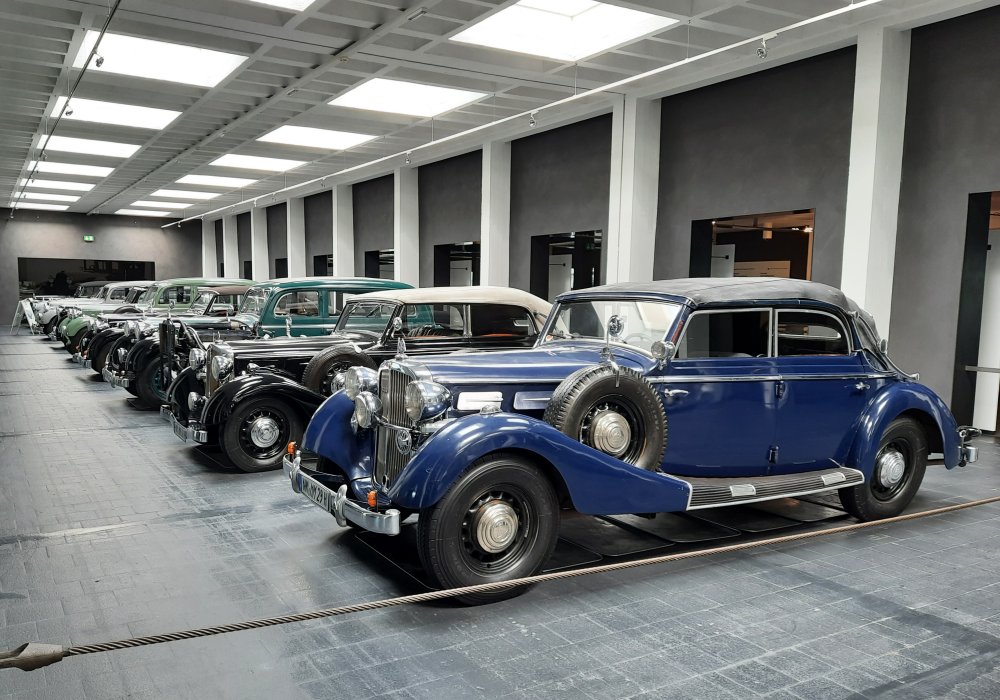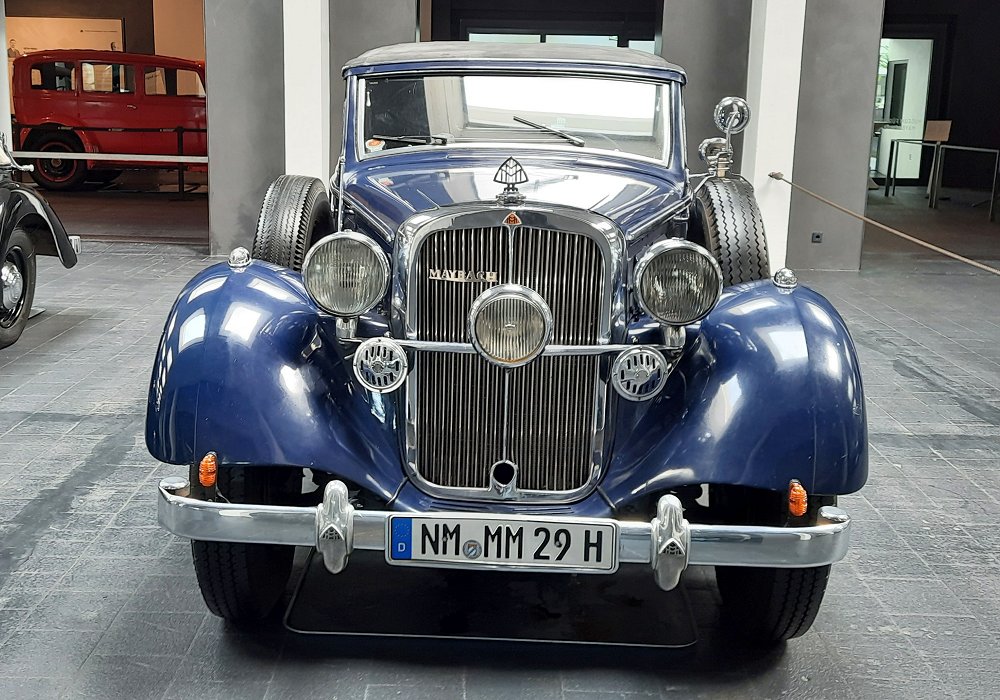Description
The Maybach SW 38 Cabriolet by Gläser was one of the most elegant and distinctive open-body interpretations of Maybach’s advanced SW-series chassis. Built in the late 1930s by the renowned Dresden coachbuilder Gläser Karosserie, the car combined Maybach’s technical sophistication with Gläser’s hallmark lightness, flowing design language and refined craftsmanship. Compared with the more formal and imposing Spohn-bodied variants, the Gläser Cabriolet had a more graceful, almost sporting character, while still offering the full measure of luxury expected of Germany’s most prestigious pre-war manufacturer.
The SW 38 chassis, introduced in 1936, formed the foundation of this distinguished cabriolet. Power came from Maybach’s 3.8-litre straight-six engine equipped with a clutch-engaged Roots-type supercharger. Output hovered around 150–160 horsepower, a remarkable figure for a luxury car of this size and era. The engine was famed for its smoothness, quietness and flexibility, delivering strong low-speed torque and relaxed high-speed cruising. The mechanical refinement drew directly on Maybach’s aviation engineering expertise, giving the SW 38 a character that felt modern, effortless and technically advanced.
The chassis incorporated Maybach’s Schwingachse independent rear suspension — a swing-axle arrangement paired with independent front suspension. This system provided a level of ride comfort and stability far beyond most luxury cars of the mid-1930s, many of which still used rigid axles. Combined with a robust box-section frame, the SW 38 offered exceptional poise on the road. The long wheelbase further enhanced ride quality, making the car an ideal platform for refined open-top motoring. Complementing this was Maybach’s renowned semi-automatic preselector transmission with torque converter, which allowed smooth, clutch-free operation and contributed to the car’s serene driving experience.
Gläser’s cabriolet bodywork gave the SW 38 a lighter, more elegant appearance than many of the heavier, more formal coachbuilt variants. Gläser had a reputation for crafting lithe, beautifully proportioned open cars with subtle sporting undertones, and this philosophy showed clearly on the SW 38 Cabriolet. The body typically featured long, gently sweeping fenders, clean door lines, a refined beltline and a well-contoured rear deck designed to house the fully folding soft-top. Gläser’s craftsmanship was exceptional: each panel was hand-shaped, and the overall style emphasised flowing curves and visual harmony rather than overt grandeur. The result was a cabriolet with a graceful, almost understated presence, yet unmistakably exclusive.
Inside, the SW 38 Cabriolet Gläser showcased the same extraordinary level of craftsmanship found across the Maybach range. The cabin was trimmed in the finest materials available: high-grade leather, polished hardwood veneers, thick carpeting and finely machined metal fittings. The dashboard typically carried elegantly arranged instruments with precision aviation-style dials, reflecting Maybach’s engineering heritage. Seating was generous and deeply upholstered, and although the cabriolet body had a more intimate feel than the large Pullman variants, it still offered comfortable accommodation for four passengers. Owners could commission bespoke features such as vanity cases, fold-down trays, heater systems and tailored storage solutions.
On the road, the SW 38 Cabriolet Gläser delivered a driving experience that matched its visual refinement. The supercharged straight-six provided effortless power, and the semi-automatic transmission made progress smooth and uninterrupted. The advanced suspension absorbed surface imperfections with ease, giving the cabriolet a floating, unhurried character well suited to long touring journeys. Steering was steady and precise for such a large car, and braking — via large mechanical or hydraulic drums depending on the specific year — offered strong performance for the period. The combination of open-air elegance, mechanical sophistication and ride comfort made the Gläser cabriolet one of the finest grand-touring luxury convertibles of pre-war Germany.
Production numbers were very limited, as all Maybachs of the era were bespoke commissions and Gläser was a smaller, highly artisanal coachbuilder. As a result, surviving examples are extremely rare. Those that remain are prized for their beauty, craftsmanship and the unique style Gläser brought to the SW 38 chassis — a style that subtly blended grand luxury with light, flowing elegance.
Today, the Maybach SW 38 Cabriolet Gläser is regarded as one of the most refined and desirable open Maybachs of the 1930s. It represents a harmonious fusion of Maybach’s engineering excellence with Gläser’s signature aesthetic sensibility. Graceful, technically sophisticated and exquisitely built, it stands as a remarkable example of pre-war German automotive artistry and a highlight in the history of both Maybach and Gläser coachbuilding.

